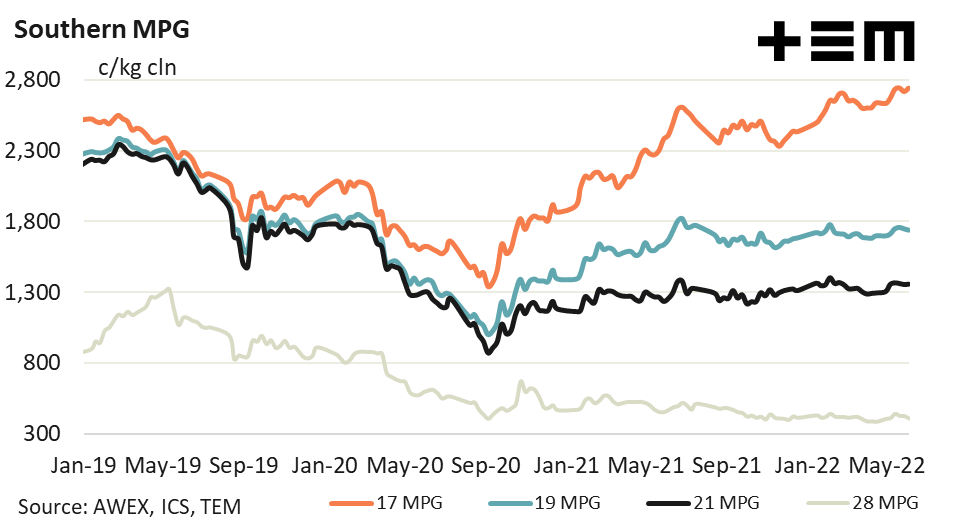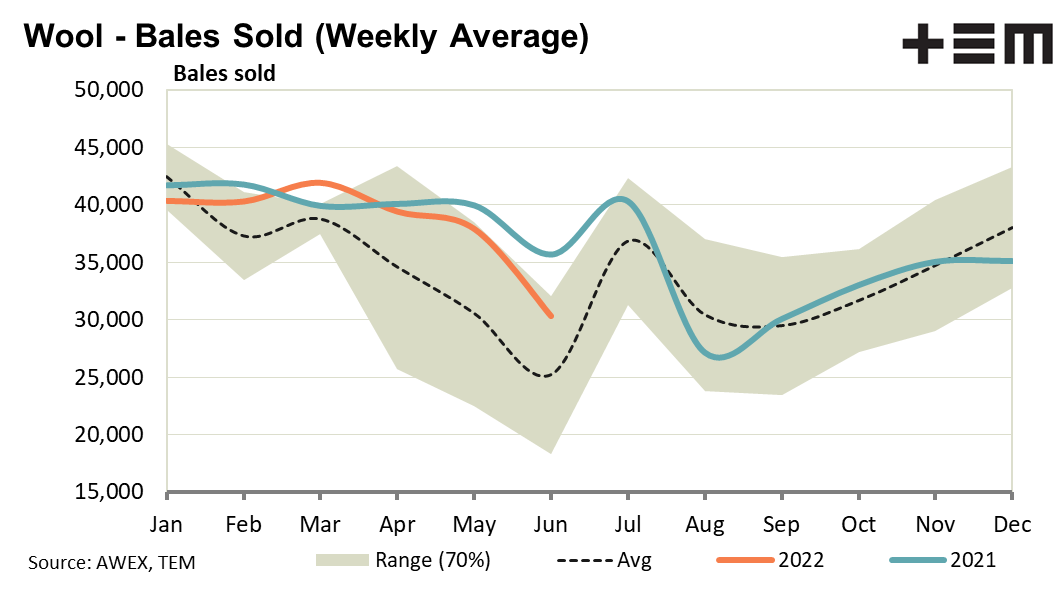Market Morsel: Promise of a lift.

Market Morsel
New business late this week points to price rises next week in the merino market, adjusted for currency fluctuations. Overall apparel fibre prices have been steady, at varying levels, in 2022 with the exception of cotton which has continued to strengthen.
This means the steadiness we are seeing greasy wool prices is a reflection of the wider apparel fibre markets. Fine cardings (18 micron and finer) prices fell this week but the 18.5 micron and broader merino cardings were steady. Since early 2020 micron has become an important factor in cardings prices, which is an interesting change in market structure. As a consequence finer cardings are much higher than the medium/broader merino cardings prices, and seemingly will be more volatile.
The southern hemisphere supply of wool is entering its quiet time of the season, with South Africa having one more sale for the season and South America waiting for shearing in the spring. Northern hemisphere clips will start to be shorn and arrive at store in the coming month.
17 Micron
Interest in fine wool continues, despite the big premiums. A stable market is truly a wondrous thing for fine merino growers at present. Fine cardings prices did fall this week, but they have the support of medium cardings prices which were stable.
19 Micron
AWTA volumes for May were down in eastern Australia, which makes sense given the wet month in NSW where some 40% of the clip comes from. The average merino price rank is close to that of polyester staples fibre, in the middle of apparel fibre rankings. Medium merino wool is following the “crowd” in terms of apparel fibre prices.
21 Micron
The 21 MPG continues drifting sideways in US dollar terms. Varying costs along the supply chain (think increased logistics, finance and energy) will change prices/costs at the different stages. While we may not see much change in price, it is likely to be quite different to topmakers, spinners, weavers and garment makers.
28 Micron
AWTA volumes for crossbred fell in May (year on year) except for 24-26 micron (crossbred lambs in the main) which rose. The northern hemisphere clips start to be shorn in June, which will provide some competition for lower quality crossbred wool (composite).



